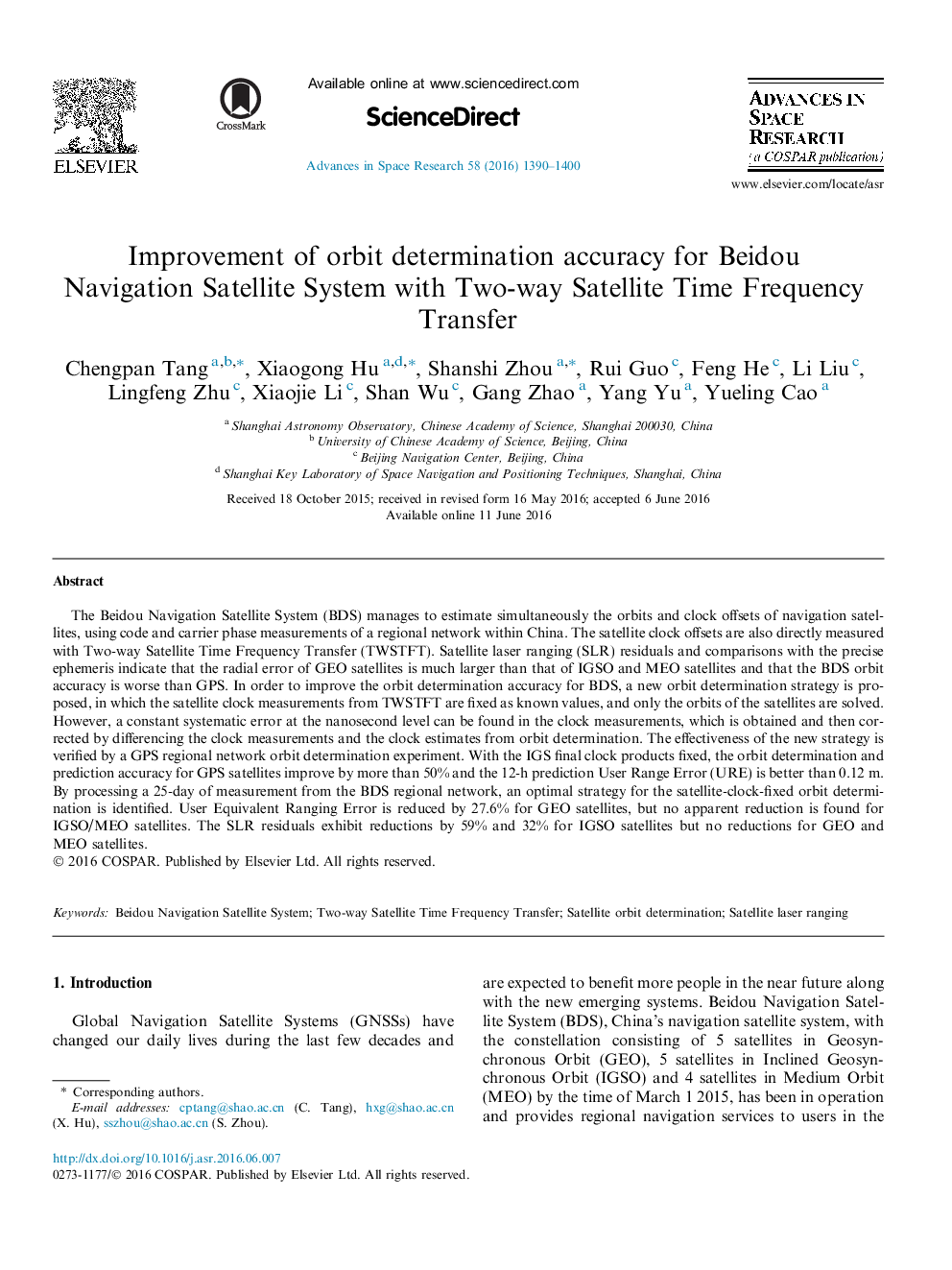| کد مقاله | کد نشریه | سال انتشار | مقاله انگلیسی | نسخه تمام متن |
|---|---|---|---|---|
| 1763190 | 1399450 | 2016 | 11 صفحه PDF | دانلود رایگان |
The Beidou Navigation Satellite System (BDS) manages to estimate simultaneously the orbits and clock offsets of navigation satellites, using code and carrier phase measurements of a regional network within China. The satellite clock offsets are also directly measured with Two-way Satellite Time Frequency Transfer (TWSTFT). Satellite laser ranging (SLR) residuals and comparisons with the precise ephemeris indicate that the radial error of GEO satellites is much larger than that of IGSO and MEO satellites and that the BDS orbit accuracy is worse than GPS. In order to improve the orbit determination accuracy for BDS, a new orbit determination strategy is proposed, in which the satellite clock measurements from TWSTFT are fixed as known values, and only the orbits of the satellites are solved. However, a constant systematic error at the nanosecond level can be found in the clock measurements, which is obtained and then corrected by differencing the clock measurements and the clock estimates from orbit determination. The effectiveness of the new strategy is verified by a GPS regional network orbit determination experiment. With the IGS final clock products fixed, the orbit determination and prediction accuracy for GPS satellites improve by more than 50% and the 12-h prediction User Range Error (URE) is better than 0.12 m. By processing a 25-day of measurement from the BDS regional network, an optimal strategy for the satellite-clock-fixed orbit determination is identified. User Equivalent Ranging Error is reduced by 27.6% for GEO satellites, but no apparent reduction is found for IGSO/MEO satellites. The SLR residuals exhibit reductions by 59% and 32% for IGSO satellites but no reductions for GEO and MEO satellites.
Journal: Advances in Space Research - Volume 58, Issue 7, 1 October 2016, Pages 1390–1400
